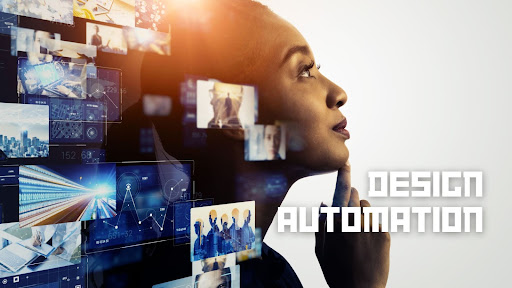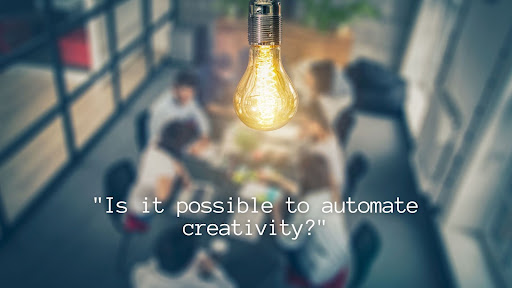Design Automation: Unleash Your Creative Potential in No Time

Design automation is a software tool to automate different operations associated with the design of goods, structures, or systems. It is frequently utilized in the manufacturing, engineering, and architectural sectors to improve design processes and decrease related time and costs. Designers may focus on the creative parts of design by automating tedious chores, resulting in more imaginative and distinctive designs. Design automation has grown increasingly accessible in recent years, making it a must-have tool for all levels of designers.
Design automation tools are software applications that devisers and engineers use to automate repetitive or time-consuming design operations. These technologies enable designers to swiftly and correctly develop complicated designs, decreasing the time and effort necessary to finish a project. Computer-aided design (CAD) software, simulation tools, optimization algorithms, and product lifecycle management (PLM) systems are examples of design automation tools. It helps increase productivity and output in different industries, including manufacturing, architecture, engineering, and construction
Introduction
Design automation is a powerful tool that can help unleash your creative potential in no time. It is a process that uses software tools to automate various tasks related to designing products, buildings, or systems. This technology is widely used in the manufacturing, engineering, and architecture industries to optimize the design process and reduce time and costs. By automating repetitive tasks, designers can focus on creative tasks that need their expertise and attention.
Design automation software tools use algorithms and programming languages to automate tasks like designing, drafting, and analyzing designs. These tools can help designers generate complex 3D models, perform simulations, and analyze data. It can be important when designing large and complex systems, where a manual design would be time-consuming and prone to errors. By automating these tasks, designers can reduce the risk of errors and speed up the design process.
Design automation is not just about saving time and reducing costs; it also helps designers be more creative. By automating repetitive tasks, designers can focus on the creative aspects of design, such as conceptualizing, ideating, and prototyping. It can lead to more innovative and unique designs that stand out in the market. Design automation also helps designers explore different design options and variations quickly, enabling them to find the best design solution for a particular problem.
In recent years, design automation has become more accessible, with many software tools available for designers of all levels. These tools have become increasingly user-friendly, allowing even those without extensive technical knowledge to use them. With the growing demand for faster and more efficient design processes, design automation is likely to become even more widespread in the coming years.
In conclusion, design automation is a powerful tool that helps designers unleash their creative potential. By automating repetitive tasks, designers can focus on the creative aspects of design, resulting in more innovative and unique designs. As technology continues, design automation is used to become even more accessible, making it an essential tool for designers of all levels.
What exactly is design automation?
One of the primary benefits of design automation is that it allows designers to focus on creative tasks rather than repetitive ones. For example, instead of spending hours creating a 3D model, a designer can use design automation software to quickly generate a model and then spend more time refining it and exploring different design options. As a result, more focus is given to creative work while mundane activities are lessened.
Creative automation tools are a subset of design automation software that focuses on creative activities only. These tools can help designers quickly generate ideas and explore different design options. For example, an automation tool might allow a designer to input a few parameters, such as the desired shape of a product or the materials, and then generate multiple design variations based on those parameters. It allows designers to quickly explore other design options and identify the best one for their project.
Another sort of software that is used in the design process is design tools. These tools can range from simple sketching programs to complex 3D modeling software. Design tools are essential for designers because they allow them to visualize their ideas and communicate them to others. For example, a designer might use a 3D modeling program to create a detailed model of a product, which can then be used to create technical drawings or animations.
When using design automation tools, there are several tips that designers can keep in mind to ensure that they get the most out of the software. One important thing is to start with a clear understanding of the problem that needs to be solved. It means defining the project goals, understanding the target audience, and identifying constraints or limitations. With a clear understanding of the problem, designers can use design automation tools to explore different design options and find the best solution.
Another tip is to be willing to experiment and try new things. Design automation tools can help designers generate ideas quickly, and it's important to be open to exploring different options. It means being willing to iterate and refine designs based on feedback and testing.
Finally, it's important to remember that design automation is a tool, not a replacement for human creativity. While design automation tools can help designers be more efficient and effective, they cannot replace the creative thinking and problem-solving skills that are essential for successful design. Designers should use automation tools to support their creativity, not replace it.
By incorporating design tips and utilizing creative automation tools, designers can quickly generate ideas and explore different design options. Additionally, traditional design tools remain essential for visualizing and communicating designs effectively. With a combination of design automation tools and design tips, designers can streamline their workflow and produce innovative designs more efficiently.
Creative automation tools are used across a wide range of industries and disciplines. Here are some of the most common applications of these tools:
- Graphic Design: Creative automation tools such as Adobe Creative Cloud, Canva, and Sketch are widely used in graphic design to create logos, brochures, posters, and other visual materials. These tools offer pre-designed templates and design elements and can be customized to suit a project's requirements.
- Video Production: Video editing software such as Adobe Premiere Pro, Apple Final Cut Pro, and Avid Media Composer are used in video production to edit and manipulate video footage. These tools provide features such as color grading, audio syncing, and special effects that can be used to create high-quality videos.
- Animation: Animation software such as Adobe After Effects, Blender, and Maya is used to create 2D and 3D animations for movies, TV shows, and video games. These tools provide features such as motion graphics, character animation, and visual effects, which can be used to create stunning visuals.
- Architecture: Generative design tools such as Autodesk's Dreamcatcher and Rhino are used in architecture to create complex and optimized designs. These tools allow architects to define specific design constraints and then generate multiple design options based on those constraints.
- Product Design: Software for product design such as SolidWorks, Fusion 360, and Inventor is used to create 3D models and prototypes. These tools provide features such as parametric modeling, assembly modeling, and simulation, which can be used to design and test products.
- Web Design: Web design tools such as Adobe XD, Figma, and Sketch are used in web design to create wireframes, prototypes, and high-fidelity designs. These tools allow designers to create responsive designs that work across different devices and screen sizes.
- Writing: Tools such as Grammarly and Hemingway are used to help writers improve their writing skills. These tools provide features such as grammar and spelling checking, readability analysis, and suggestions for sentence structure.
In the end, creative automation technologies are extensively employed in different kinds of businesses and professions. They provide designers, architects, writers, and other creative professionals with a range of features and tools to streamline their workflow, automate repetitive tasks, and create stunning visuals and designs.
"Is it possible to automate creativity?"

Creative automation tools can help designers streamline their workflow and generate new ideas, but they should not replace human creativity. However, with the rise of design automation tools and artificial intelligence, the question of whether creativity can be automated is becoming increasingly relevant.
On the one hand, computers and algorithms can indeed be programmed to generate new ideas and designs based on specific parameters or constraints. It is the basis of generative design, a design automation tool that uses algorithms to generate multiple design options. These options can be refined and optimized based on feedback from designers and engineers, resulting in a final design that is both functional and aesthetically pleasing.
However, some argue that this type of creativity is not creative but a form of problem-solving. While generative design can produce a range of unique design options, these options are ultimately constrained by the parameters set by the designer or engineer. The computer is simply generating options based on those constraints, rather than truly creating something new and innovative.
Furthermore, while algorithms may be able to generate new designs, they cannot replicate the nuanced and subjective nature of human creativity. Creativity is often fueled by emotions, intuition, and personal experiences, all of which are difficult to quantify and program into an algorithm. It is these intangible qualities that make human creativity so unique and valuable.
There are many ways in which technology can enhance and support human creativity. Creative automation tools, for example, can help designers generate new ideas and explore different design options more quickly and efficiently. These tools can be particularly useful in industries such as architecture, where large and complex projects require a significant amount of design work.
Creative automation tools can also utilize machine learning algorithms to recognize patterns in vast collections of existing designs and generate new designs by applying those patterns. The technique is referred to as "style transfer" and can be employed to create designs that draw inspiration from previous works. Although it may not necessarily involve original creativity, the designs generated through this process can be unique and captivating, which would have been difficult to achieve using manual methods.
The question of whether creativity can be automated is multi-dimensional and intricate. Although automation tools and algorithms have the potential to produce new designs and ideas, their efficacy is ultimately dependent on human-defined parameters. Although machines can produce new ideas, humans are the source of genuinely creative and groundbreaking concepts, which arise from intuition and emotions that cannot be replicated by technology. Therefore, while automation can optimize and expedite the creative process, human creativity is an irreplaceable and indispensable element of innovation.
To conclude, technology can undoubtedly augment and facilitate human creativity, but it cannot entirely supplant it. Creativity is a distinctively human characteristic, nourished by emotions, intuition, and individual experiences. Although algorithms and automation tools can aid in creating new designs and ideas, their efficacy is ultimately bounded by human-defined parameters. Therefore, human creativity will always remain an indispensable and valuable component of the design process. The future of creative automation lies in harmonizing the strengths of machines with human creativity, leading to a symbiotic relationship between technology and innovation.

The Benefits of Using Creative Automation Tools
3D modeling software, computer-aided design (CAD) software, simulation software, and generative design software are examples of design automation tools. 3D modeling software is indispensable in visualizing and communicating designs, while CAD software is primarily used in engineering and architecture. Simulation software enables designers to create virtual models and subject them to diverse environments, while generative design software uses algorithms to generate a range of design options. Design automation tools are software programs that automate different elements of the design process through the use of algorithms. Design automation tools can aid designers in improving their efficiency, effectiveness, and creativity, resulting in cost savings and reduced errors. These technologies are available in various forms, each specifically designed to streamline a distinct part of the design process.
Creative automation tools can help designers and other creative professionals streamline their workflow and generate new ideas more quickly and efficiently. They can be utilized in graphic design, video production, architecture, and product design, but should not be seen as a replacement for human creativity. Tools can automate repetitive tasks and provide designers with options to explore, but we cannot replace the unique insights and perspectives that only humans can bring to the creative process.
Jenn Pereira has been writing about UX design for years and her content has been featured on Medium, Dribbble, and other popular platforms. She is constantly looking for new ways to share fresh perspectives and insights. She is currently employed as a Content Strategist for Kittl, a user-friendly design platform that creates graphics, t-shirt designs, logos and branding visuals that leave an impact.
Copyright © . All Rights Reserved